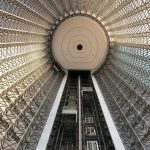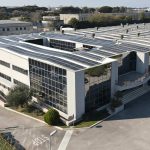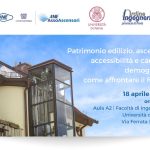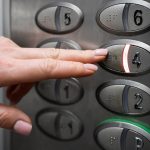MRL: the new standard in lift design
Machine Roomless (MRL) Elevators were introduced into the North American market in the late 1990’s and have become the industry standard in elevator design. After thorough review and analysis MRL requirements were included in the North American model elevator codes – ASME A17.1/CSA B44 Safety Code for Elevators and Escalators – in 2005. Machine Roomless (MRL) Elevators were introduced into the North American market in the late 1990’s and have become the industry standard in elevator design. After thorough review and analysis MRL requirements were included in the North American model elevator codes – ASME A17.1/CSA B44 Safety Code for Elevators and Escalators – in 2005. Since then, the number of MRL applications across the United States has grown rapidly. The MRL elevator design offers a safe, cost effective and energy efficient solution for most low and mid-rise buildings. MRL elevators are available with both electric and hydraulic systems.
SAFETY
MRL Elevators have been included in the North American model elevator codes (ASME A17.1/CSA B44) since 2005. ASME A17.1/CSA B44 represents the optimum in safety as it is drafted and refined by hundreds of experienced experts from all aspects of the elevator industry including enforcing authorities, engineering and design experts, inspectors, labor, building and facility owners, among others. This code is developed through a consensus-building protocol, which invites review and comment at all stages of the process. All issues are examined in-depth, hazard assessments are conducted, and the model code is updated regularly to ensure the highest levels of safety. As part of this code, MRL designs have been accepted by the experts in the field and must meet the outlined requirements to guarantee an equivalent or higher safety for these applications as compared to traditional designs. In addition, industry data indicates that the percentage of MRL elevator sales has increased from 14% to 51% of total sales between the years of 2005 and 2014. During that same time period, the number of Lost Time Accidents per 1000 units sold has decreased.
COST
MRL Elevators offer lower costs for new and modernization construction. This design is the industry standard for low and mid-rise buildings, providing an economy of scale in cost benefits and delivery time, as well as more pre-engineered variations and design options.NEII estimates that employing non-MRL designs can add 25% to the price per unit ($50,000 – $100,000) when modifications are necessary to customize a standard non-MRL design for use in this market.Traditional electric and hydraulic elevator designs also require a machine or control room above the roofline or adjacent to the hoistway to accommodate the electrical and ventilation equipment supporting its operation, adding $25,000 in building design and construction costs. MRLs with their advanced technology allow machines to be mounted in the uppermost part of the elevator shaft or in the pit eliminating the need for a separate room.
RELIABILITY
Over the last ten years MRLs have become the fastest growing product category within the elevator industry and the customary elevator application for installation in low to mid-rise buildings around the world. Over 90% of the equipment sold by NEII member companies for low and mid-rise applications are MRL designs. All of the major elevator manufacturers have one or more MRL designs as a standard product offering and continue to invest significant research and development resources to ensure that these products provide the highest level of quality, safety and dependability. Companies subject these and all of their designs and equipment to rigorous testing and evaluation to increase product life and minimize maintenance requirements. NEII member companies report that they receive fewer call-backs for maintenance and repair for their MRL products, but the reliability of elevator apparatus, whether it is a MRL or other configuration, is dependent upon design, quality of materials and components, maintenance and duty cycle (i.e., amount of use).
USABLE SPACE
Since a separate machine or control room is not required with a MRL design, more space is available within the building. The NEII-1 Standards & Guideline minimum for a machine room to accommodate equivalent non-MRL equipment for a single elevator is a range of 6’ x 7’ to 8’2” x 18’6”, with multiple elevator groups requiring significantly larger rooms. The 100+ square feet required for a machine room can be utilized for other purposes including additional living or office space, more parking and many others. In addition, the use of MRL elevators improves the ability to fit an elevator into existing buildings, thereby meeting handicapped accessibility requirements and assisting in modernization of elevators in existing facilities.
ENERGY EFFICIENCY
The most common MRL elevator designs are traction-type elevators utilizing cables or belts to suspend both car and counterweight. Technological advances in machine engagement of these cables or belts have allowed motors to be substantially reduced in size and horsepower. Along with the absence of a machine or control room requiring additional lighting and temperature control, it is estimated that MRLs can use up to 50% less energy than traditional designs. In addition, some systems also employ regenerative drives to capture energy that would normally be lost when a car travels up empty or down with a full load, thereby providing additional energy savings.
ABOUT NEII
The National Elevator Industry, Inc. (NEII) is the premier national trade association representing the interest of firms that install, maintain and/or manufacture elevators, escalators and other building transportation products, parts or components. Its membership includes the major elevator companies in the U.S., and its members report more than eighty percent of the hours worked within the industry. Safety of industry workers and the riding public is top priority.
For further information: www.neii.org.
By
NEII – National Elevator Industry, Inc.
Salem, New York (USA)









